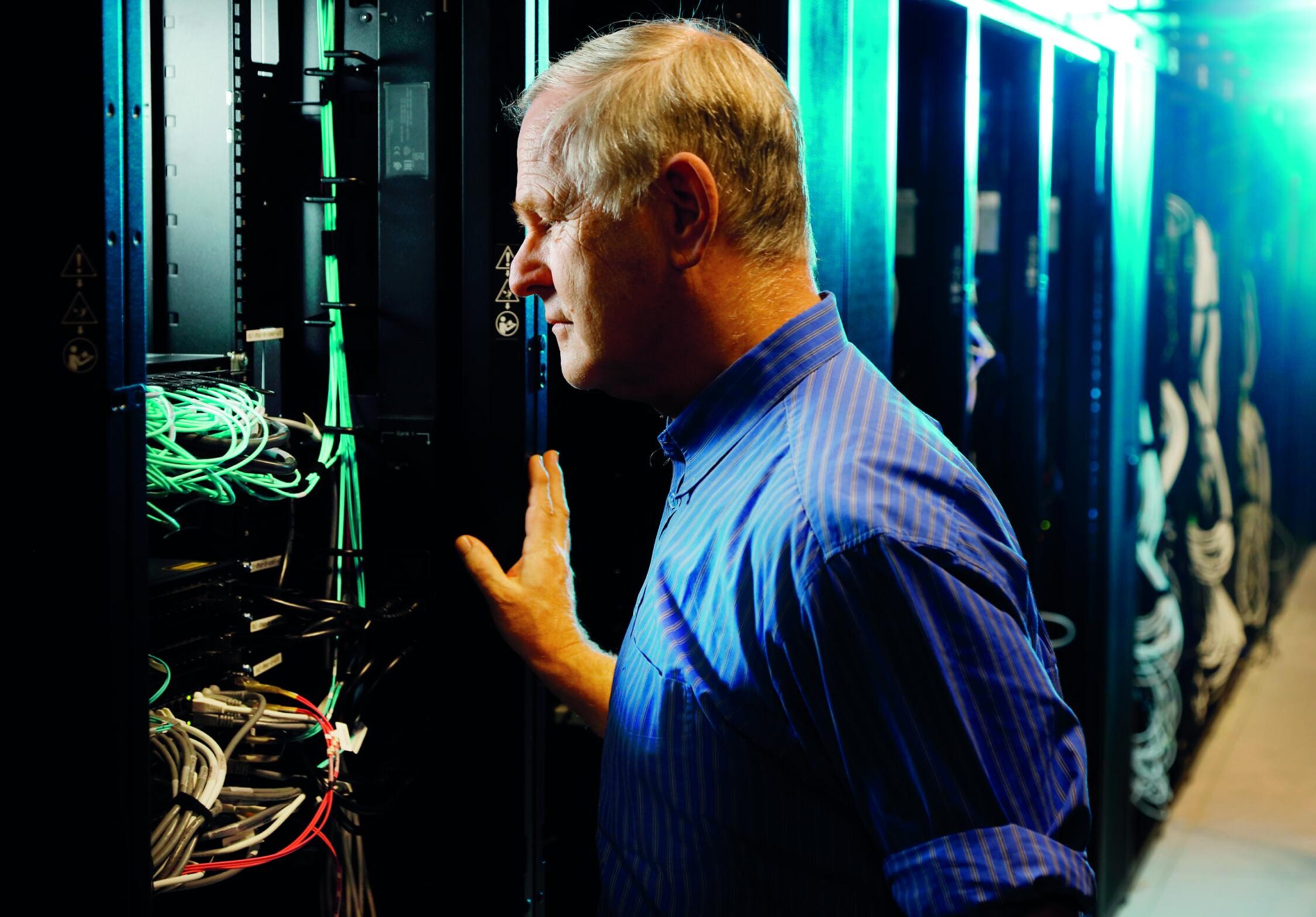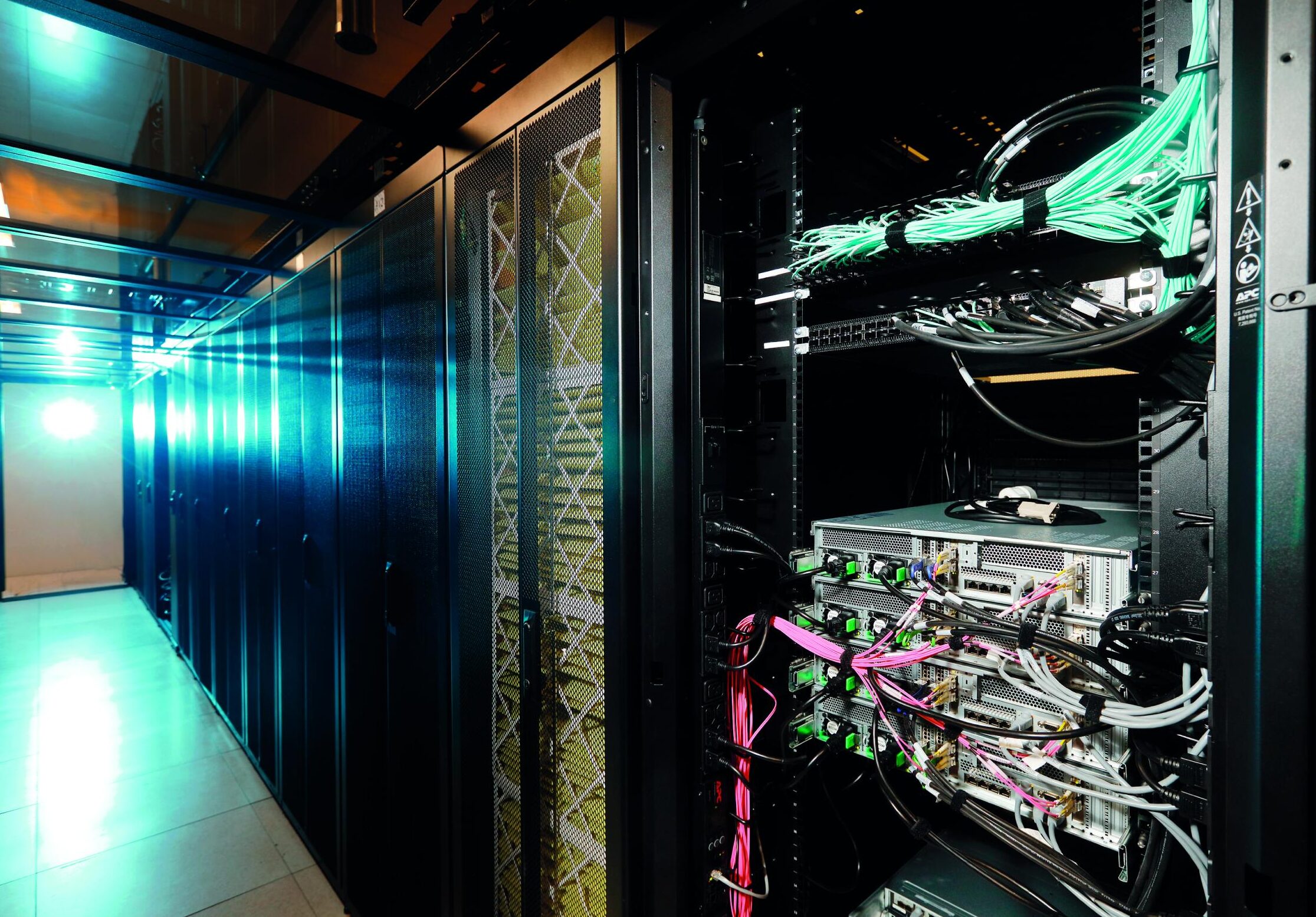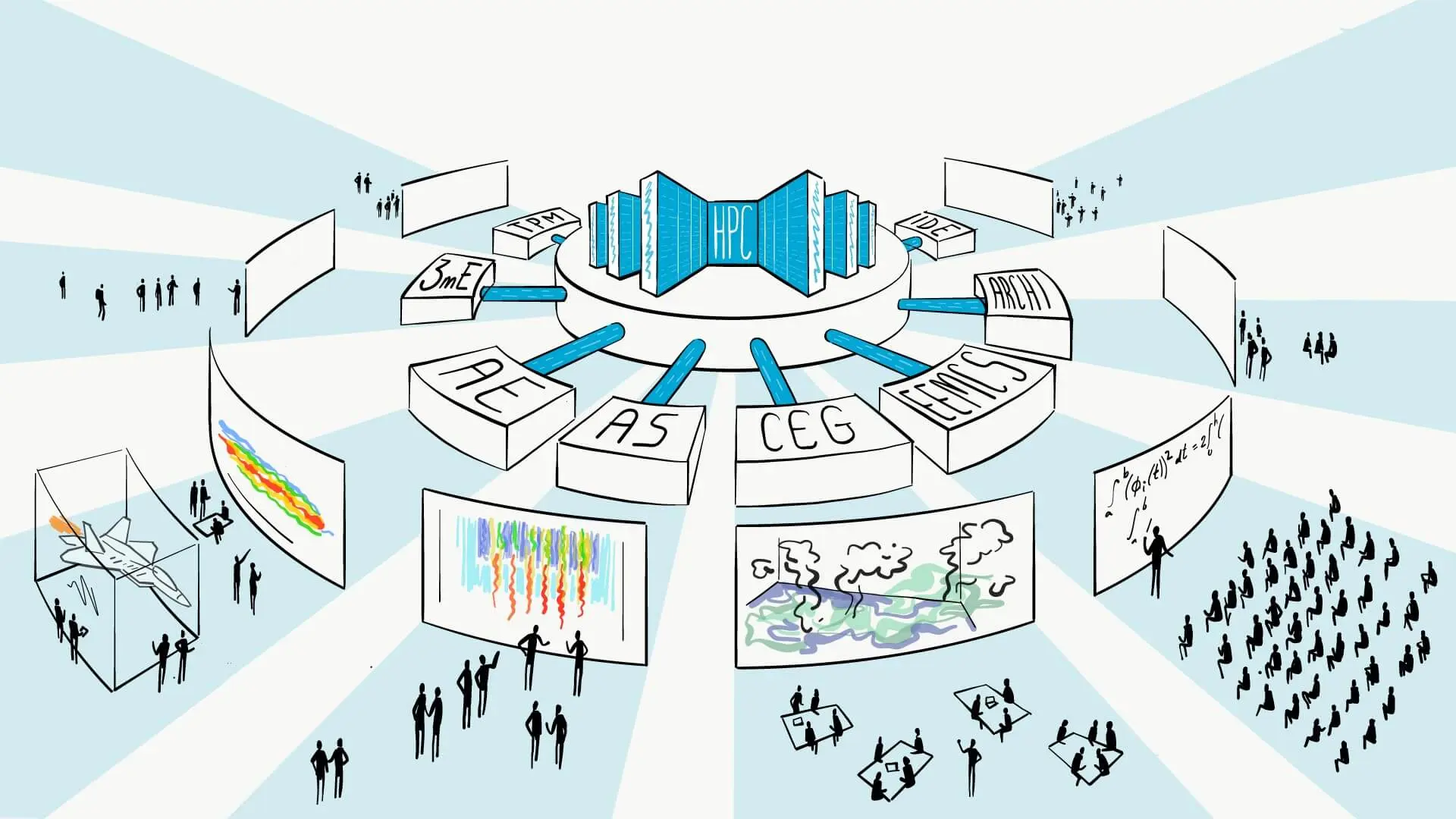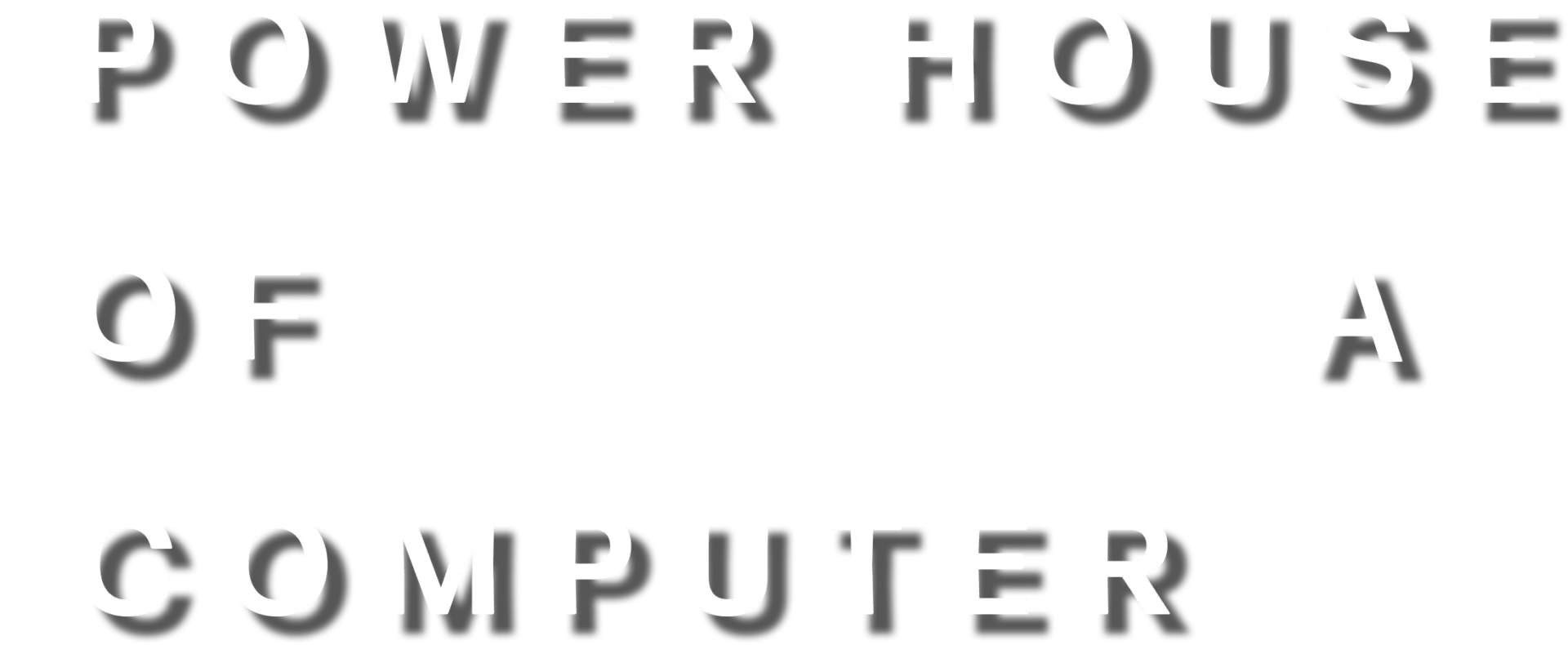In the second half of the 20th century, central computing centres were very popular at universities, but with the advent of PCs and laptops, everyone soon had their own ‘computing centre’ on their own desk. Starting in 1984, universities also had access to the supercomputers of the Stichting Academisch Rekencentrum Amsterdam (Amsterdam academic computing centre, part of Surf, the co-operative association of Dutch teaching and research institutions for information and communication technology). But this arrangement was not completely satisfactory, and after many attempts to again create a central computing centre at TU Delft, DelftBlue has finally arrived. DelftBlue is a powerhouse of a computer. Although it’s not easy to describe the size and power of supercomputers, the new computer has a speed of 2 petaflops, putting it at no. 250 of the top 500 most powerful computers in the world. This gives you an idea of the power of this supercomputer that takes up approximately one third of the TU Delft data centre. 400 modules, each with 48 processors, are distributed over 20 racks, adding up to a total of about 20,000 processors. That’s quite a setup. There are also 10 modules with four fast graphic cards each, intended for fast computing tasks with many repetitions. About one quarter of the space is used for data storage. Upon initial delivery, six racks were still empty. In about 18 months, these will be used for whatever turns out to be the most urgent, explains Professor of Numerical Analysis Dr Kees Vuik.

@Sam Rentmeester
‘WITH A SPEED OF 2 PETAFLOPS, DELFTBLUE STANDS AT NO. 250 OF THE WORLD’S 500 MOST POWERFUL COMPUTERS’

@Sam Rentmeester
‘THE DEMANDS MADE BY SOCIETY IN TERMS OF AI, MACHINE LEARNING, DIGITAL TWINS ET CETERA ARE STEADILY INCREASING’
Brainstorming over coffee
Vuik is Scientific Director at the Delft High Performance Computing Centre (DHPC), as the computing centre is officially called, as well as Scientific Director at the Delft Institute for Computational Science and Engineering (DCSE). In 2017, he was one of the initiators of the DCSE. “We first made a list of things we could do to facilitate the researchers. In the meantime, various groups were already collaborating with IT in search of their own solutions. That was not the best route, so I invited Frans for coffee.” IT Manager Frans Broos remembers it well. “Kees came with a single sheet of paper listing what he thought needed to be done in collaboration with IT. I viewed it as a lovely gift for me over coffee.” What had over the years seemed impossible now turned out to be quite feasible thanks to their collaboration. Broos explains that “The vision behind it comes from the scientists, but our IT people are the ones who know how best to carry it out in practice. Of course, you have to remain realistic and understand that you may not be able to achieve all your goals. If our IT people talk with Kees and explain what will work and what not, he translates that message quite effectively to his research colleagues. Researchers should focus on research. After all, they’re not cut out to be system managers.” This process started in 2017 and continued for four more years before the final purchase was made. “We have a lot of smart people at TU Delft,” Broos continues, “but it is the major suppliers that have the specific expertise that we needed.” In the end, the choice fell on Fujitsu. It’s a collaborative process whereby TU Delft benefits from Fujitsu’s knowledge, development prowess, and market volume. But the goal is also to ensure that TU Delft researchers provide feedback and recommendations about the use of high-performance computing (HPC) in research and education.

Headaches
So research and education both benefit. Vuik emphasises that DelftBlue is also accessible to students and employees at TU Delft. “This whole topic gave me headaches for years. We train students in Matlab and Python, which is the basis. But he demands made by society in terms of AI, machine learning, digital twins et cetera are steadily increasing, and we were not able to provide the relevant type of support.” That is also why a certain percentage of the computer time available is reserved for teaching. DHPC is definitely not intended only for potential computational whiz-kids or programmers, but for all students. “We also wish to help students working with things like big data,” says Broos. “I often had to field questions from students completing their degree requirements whose laptops simply got overloaded. Now we finally have the means to help them.” This multifunctional use is reflected in the scheduling of DelftBlue: 10% is reserved for teaching, 80% for research, and the remaining 10% for maintenance, expansions, and updates. Until now, DHPC has had no reason to complain about a lack of interest. The group headed by Professor of Intelligent Power Grids Peter Palensky, who works in the electrical engineering ESP-Lab on the control room of the future, is one such example.
Vuik explains that “They want to sit down with us as soon as possible to see how we can use DelftBlue to make their simulations even more realistic. High Performance Computing is here to stay at TU Delft.” Besides working with High Performance Computing, DelftBlue will also be used to work on High Performance Computing. “Examples of the latter include internal memory computing and algorithm acceleration.” DelftBlue is not a competitor for Surf, says Vuik. “Surf has the biggest systems and we provide supplementary services. To ensure that TU Delft remains a dynamic organisation, it’s important for us to remain flexible and deliver tailor-made services. The best way to do this is in our own facility.” Vuik also sees possibilities for further collaboration, but not in the first year. “It may soon turn out that we can deal more effectively with satellite data for example, and that Leiden does best with medical data. This opens up avenues for mutual assistance.” And there is also a dot on the horizon. “We are thinking about adapting DelftBlue to link up to a quantum computer next to it, since quantum-encryption has already come a long way.”
Research, education, and innovation
Simulations, models, and working with big data all requires enormous amounts of computing power. HPC is fast becoming a ubiquitous technology that can support research, education, and innovation. For example, simulations can be used in research instead of carrying out complicated and time-consuming experiments. By combining various data sources and making the necessary calculations, it can also provide a wealth of new insights. This makes HPC a powerful tool for a wide range of disciplines, including materials science, fluid dynamics, quantum mechanics, design optimisation, big-data mining and artificial intelligence.

